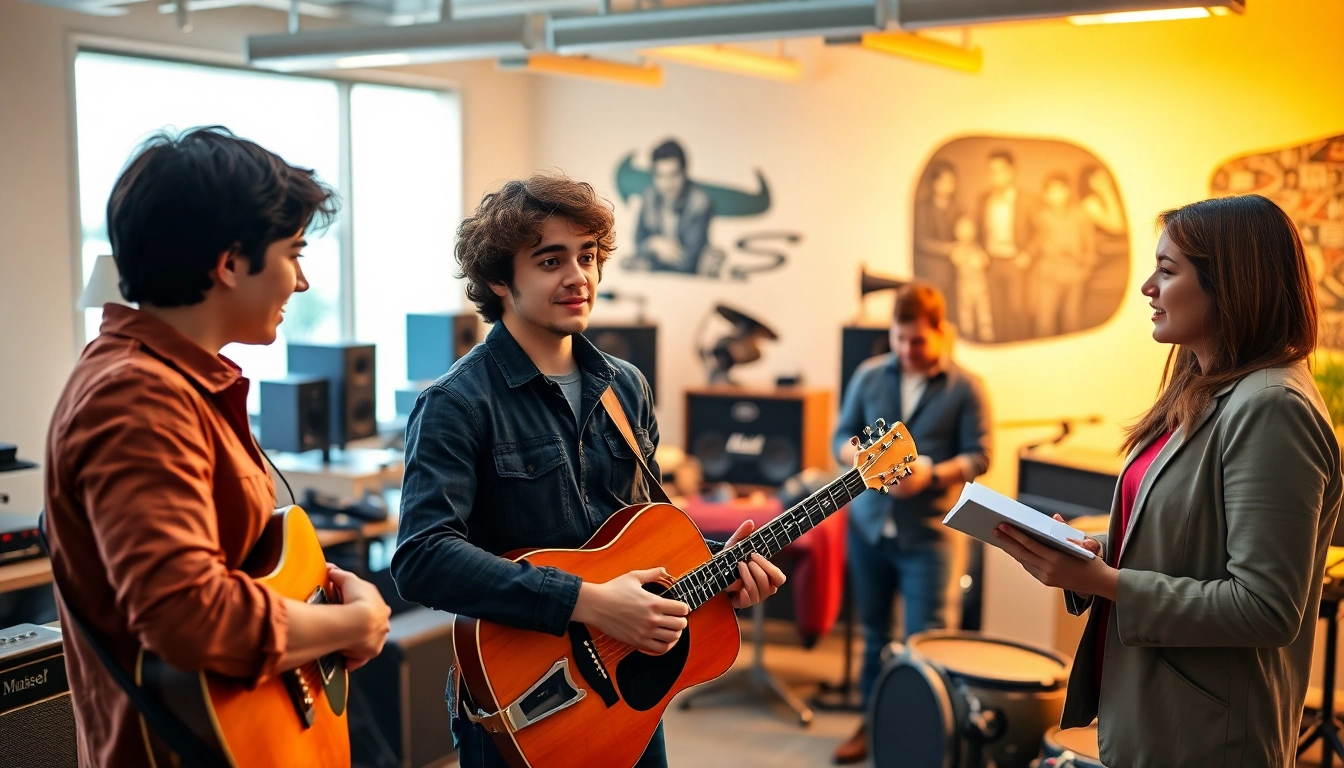Understanding Music Pitching
In the world of music, the act of music pitching refers to the process of presenting an artist’s song or album to curators, record labels, media outlets, and playlist influencers for promotion and distribution. This critical step can significantly impact an artist’s visibility and success in a saturated market. As the music industry evolves, effective pitching has become more vital than ever in successfully getting heard by the right audience.
The Importance of Effective Music Pitching
Effective music pitching is crucial for several reasons. Firstly, it directly influences whether your music will gain traction in the industry. A well-crafted pitch can catch the attention of curators who control playlist placements, blogs poised to feature your work, and record labels that could be interested in signing you. Secondly, a good pitch helps to establish an artist’s brand narrative. It communicates who you are, what your music represents, and why it deserves to be heard. Lastly, targeted music pitching can save time and enhance efficiency by focusing efforts on the most relevant stakeholders in the music industry.
Key Components of a Successful Music Pitch
A successful music pitch is often characterized by several key components:
- Clarity: A clear and concise overview of your music and brand.
- Personalization: Tailoring your pitch for specific curators or publications to showcase the relevance of your music to their audience.
- Timing: Knowing when to submit your pitch, especially in relation to the release date of your music.
- Visuals: Engaging visuals, such as album artwork or engaging videos, that can enhance the appeal of the pitch.
- Samples: Providing music samples that reflect your best work to entice curators effectively.
Common Pitfalls to Avoid in Music Pitching
Although many artists endeavor to pitch effectively, common pitfalls can hinder their efforts:
- Generic Pitches: Sending out the same pitch to every curator without personalizing it can lead to disinterest.
- Lack of Follow-Up: Neglecting to follow up post-pitch can result in missed opportunities.
- Ignoring Submission Guidelines: Many curators provide specific submission rules; failing to adhere to these can result in immediate rejection.
- Overloading Information: Bombarding recipients with too much information can detract from the music itself. It’s critical to keep communications succinct and relevant.
Researching Your Audience
Successfully pitching music isn’t just about crafting the perfect email; it begins with research. Understanding who your audience is and where to find them lays the groundwork for a successful pitch.
Identifying the Right Curators and Platforms
Identifying the right curators is critical in the music pitching process. Begin by researching playlists that align with your genre. Sites like Spotify, Apple Music, and various music blogs often list playlists curated by users and industry professionals. Tools like SubmitHub and Groover can aid in connecting artists with playlist curators, while services like Music Audience Exchange can additionally facilitate audience targeting based on specific metrics.
Understanding Audience Preferences and Trends
Keeping a pulse on musical trends within your targeted genre is crucial. This involves listening to what is currently popular, understanding seasonal trends, and even examining how similar artists engage their audiences. Use platforms like Spotify Analytics and YouTube Insights to refine your understanding of what encourages listener engagement and drives success within your regional market.
Utilizing Data for Targeted Pitching
In the digital age, leveraging data to inform your pitching decisions is invaluable. Analytics can reveal listener demographics, popular track segments, and engagement metrics that help tailor both your music and your pitches to better resonate with your desired audience. Use this information to hone in on the factors that can make or break your music’s success.
Crafting Your Pitch
Once you have done your research, it’s time to focus on crafting your pitch. The way you present your music can significantly influence its chances of being accepted.
Writing a Compelling Pitch Email
Your pitch email should be compelling and engaging while remaining professional. Start with a strong subject line that grabs attention. In the email, include a personal greeting, a brief introduction of who you are as an artist, and why you’re reaching out. The body should include highlights of your music, including any notable achievements or press coverage, before providing a short and catchy description of your track that entices the reader. Lastly, conclude with a call-to-action and your contact information.
Using Visuals and Music Samples Effectively
Visuals and audio samples can significantly enhance your pitch. Include high-quality images of your album artwork or photographs from performances, as these can create an engaging visual experience for the recipient. When it comes to music samples, ensure you provide links to platforms like SoundCloud, where curators can easily access your tracks. Always provide your best work, ideally tracks that reflect your artistic style, and ensure they are professionally mixed and mastered.
Tailoring Your Message for Different Curators
Different curators have varying interests and audiences. Tailor your pitch message based on the specific curator you’re addressing; for instance, a pitch to a blog that focuses on indie music will differ from one directed to a pop playlist curator. Take the time to research the type of content curators typically share, and align your pitch accordingly. Mention relevant artists or tracks they’ve featured that align with your music to create a connection.
Team Collaboration in Music Pitching
While musicians often handle their pitching strategies, collaborating with a larger team can enhance efforts significantly. This can include managers, promoters, and public relations experts.
Working with Managers and Promoters
Your manager and promotional team can provide insights into industry connections and help refine your pitch strategies. They understand what curators are looking for and can offer valuable advice on timing and approach. Consider involving them in your pitching process to leverage their experience and networks effectively.
The Role of Networking in Music Pitching
Networking plays a significant role in enhancing your music pitching strategies. Attend industry events, conferences, and local showcases to meet curators and industry professionals. Building relationships can lead to opportunities and better receptiveness when you follow up with a pitch. A personal connection can often tip the scales in your favor.
Leveraging Social Media to Enhance Your Pitch
In today’s digital landscape, social media provides a unique platform for pitches. Follow curators, engage with their content, and even tag them in relevant posts to create awareness before you pitch them directly. Utilize platforms like Instagram and Twitter to share snippets of your music, behind-the-scenes content, and personal stories to build an audience that may be compelling to curators and industry influencers.
Measuring the Success of Your Music Pitching Efforts
After you have successfully sent out your music pitches, it’s essential to measure their impact. This can provide insights for future pitching strategies and adjustments.
Analyzing Engagement and Feedback
After sending out pitches, keep track of responses, engagement rates, and feedback. Look for any patterns in the responses and analyze which pitches worked best and why. Are certain pitch styles more effective with specific curators? Understanding these metrics can illuminate clearer paths for future pitching efforts.
Adjusting Strategies Based on Performance Metrics
Data is invaluable. As you collect feedback from your pitches, adjust your strategy based on the performance metrics. If certain pitches lead to more engagement and interest, try to replicate those strategies in future pitches. Continual learning and adaptation are crucial as the music industry continues to evolve.
Long-term Relationship Building with Curators
Successful music pitching isn’t solely about getting the nod for one song; it’s about building long-term relationships with curators. Develop strategies to maintain these connections, including following up, thanking them for consideration, and sharing updates on your music journey. Building these lasting relationships can yield future opportunities and ongoing support as you continue in your music career.



